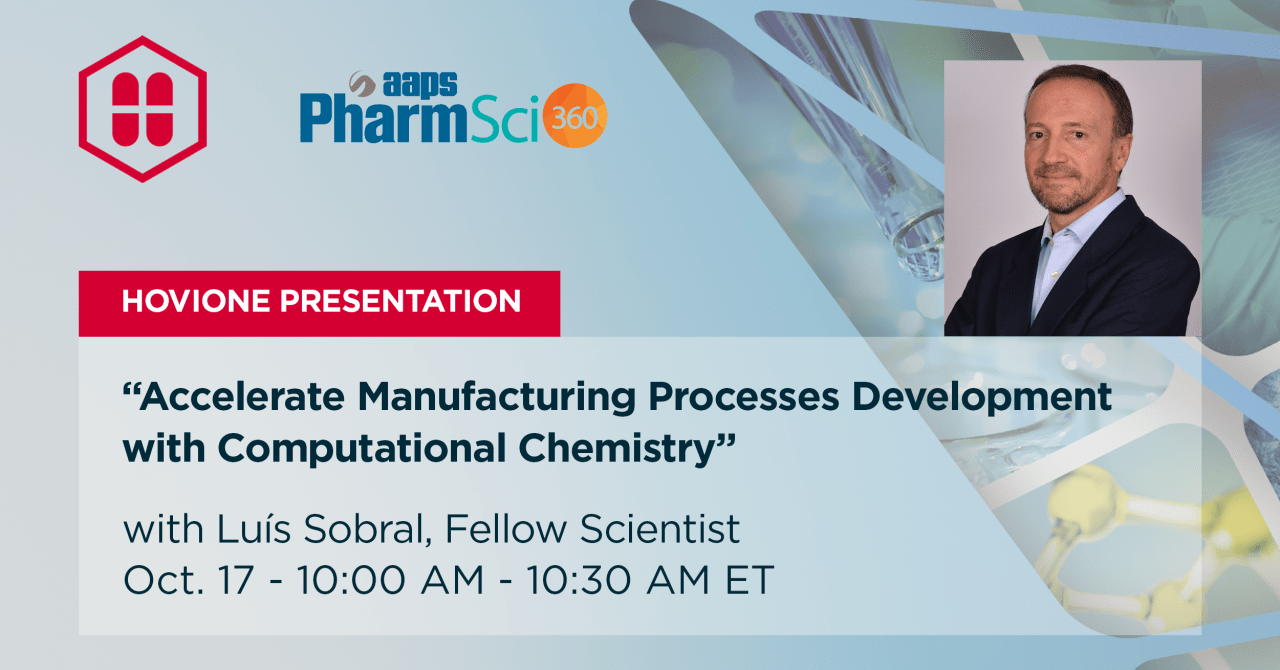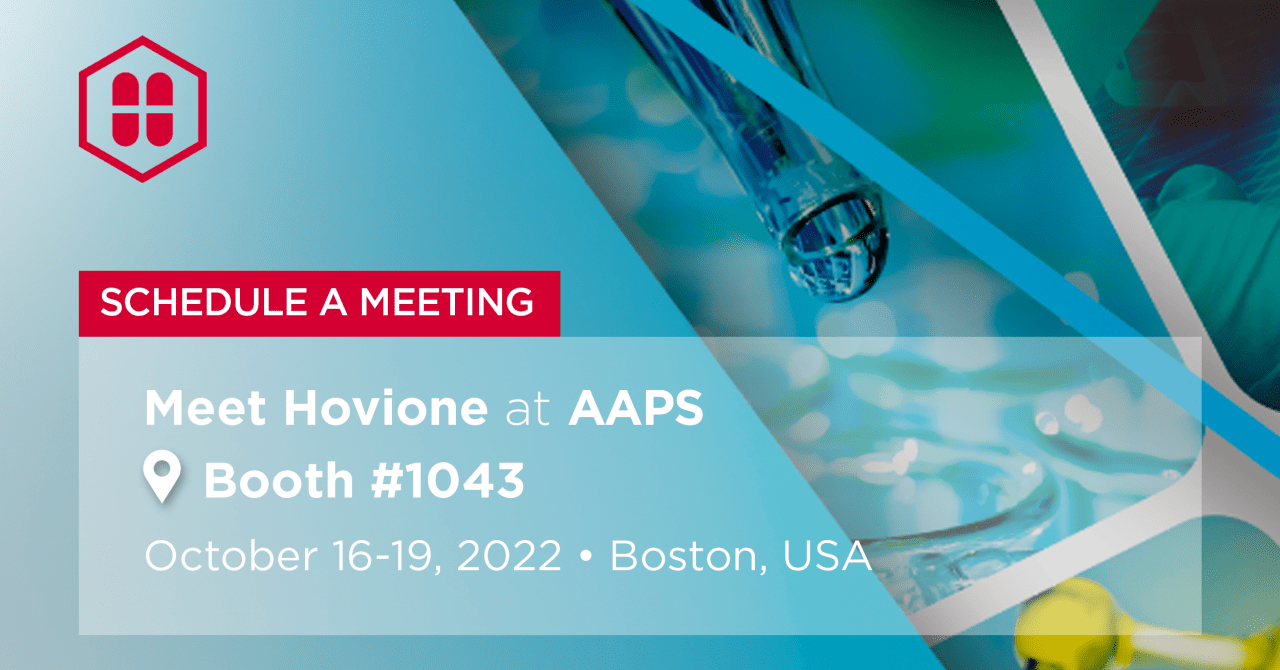Press Room
AAPS 2022 PharmSci 360
Visit Hovione’s booth at AAPS PharmSci 360 next October 16-19 in Boston and meet our team of experts.
Continuous tableting is suited for all type of drug products for oral delivery, including the production of precision medicines and breakthrough therapies. This technology assures robust supply of quality product through enhanced process control strategies while using the same equipment for development and commercial-scale production.
 |
|
HOVIONE PRESENTATION On October 17th, don't miss our presentation: “Accelerate Manufacturing Processes Development with Computational Chemistry” with Luís Sobral, Fellow Scientist. 10:00 AM - 10:30 AM ET |
Poster Sessions
Monday, October 17, 2022 | 2:30 PM – 3:30 PM ET
Poster: Use of PAT Tools in the Development, Monitor and Control of Continuous Manufacturing Processes
Presenting Author: Ricardo Sousa, MS - Senior Formulation Development Scientist, Hovione
Tuesday, October 18, 2022 | 9:30 AM – 10:30 AM ET
Poster: Enhancing the “Right First Time” Concept in Continuous Manufacturing–Development Strategy
Presenting Author: Ricardo Sousa, MS - Senior Formulation Development Scientist, Hovione
Tuesday, October 18, 2022 | 11:30 AM – 12:30 PM ET
Poster: Recent Advances in ASD Formulations: HIPROS and Dispersome
Presenting Author: Inês Ramos, PhD - Formulation Scientist, Hovione
Let’s discuss your project together.
Schedule a meeting with our experts.


